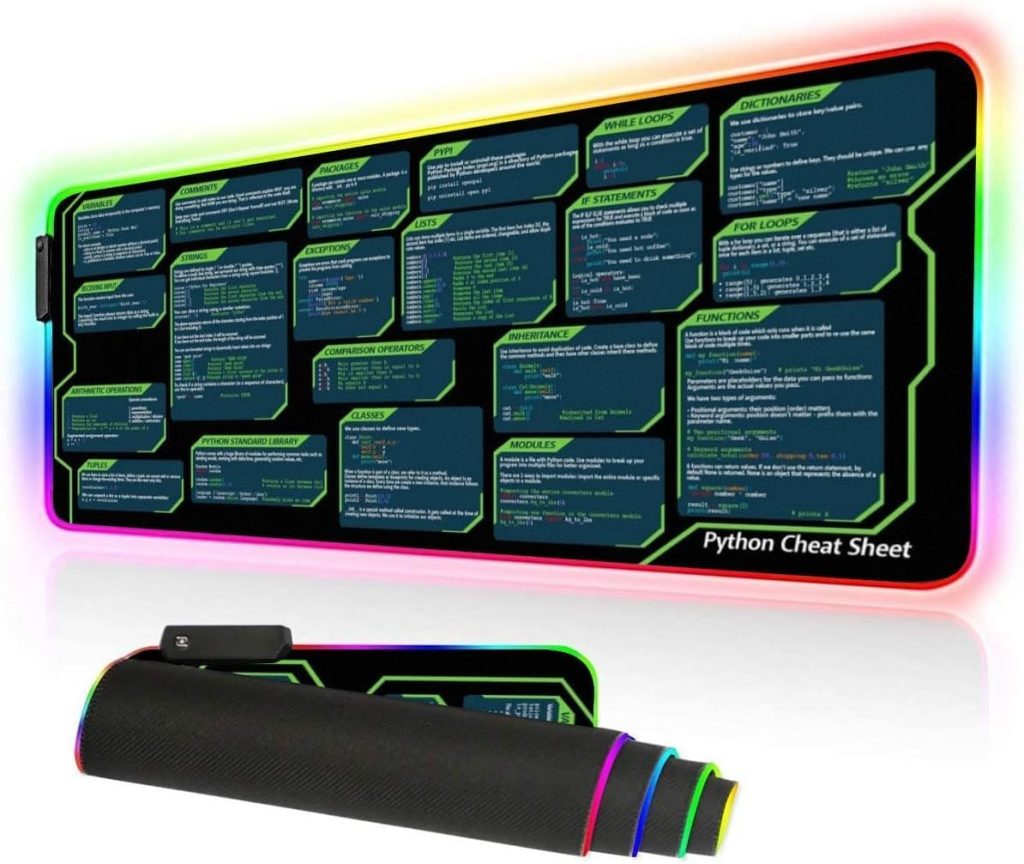
The asyncio.Future class in Python’s asyncio library represents an asynchronous operation that may or may not have completed yet. It serves as a placeholder for the eventual result of an asynchronous operation, which will allow you to handle the result once it becomes available. Future objects are essential building blocks in the asyncio framework, allowing you to write and manage concurrent code effectively.
A Future object can be in one of three states:
- The asynchronous operation has not completed yet.
- The asynchronous operation was cancelled before it could complete.
- The asynchronous operation has completed, either successfully or with an exception.
Future objects provide a way to interact with asynchronous operations by which will allow you to attach callbacks, chain futures together, and handle exceptions. They’re particularly useful when you need to perform multiple asynchronous operations simultaneously and handle their results in a non-blocking manner.
Here’s a simple example that demonstrates the basic usage of a Future object:
import asyncio
async def main():
# Create a new Future object
future = asyncio.Future()
# Schedule a task to set the result of the Future
asyncio.create_task(set_future_result(future))
# Wait for the Future to be done
await future
# Get the result of the Future
result = future.result()
print(f"Result: {result}")
async def set_future_result(future):
# Simulate some asynchronous operation
await asyncio.sleep(1)
# Set the result of the Future
future.set_result("Success!")
asyncio.run(main())
In this example, we create a new Future object and schedule a task to set its result after a simulated asynchronous operation (using asyncio.sleep(1)). We then wait for the Future to be done and retrieve its result using the result() method.
Creating and Initializing Future Objects
In asyncio, you can create and initialize Future objects in several ways. The most simpler method is to create a new instance of the asyncio.Future class:
import asyncio # Create a new Future object future = asyncio.Future()
When you create a new Future object, it is initially in the “pending” state, meaning that the asynchronous operation it represents has not completed yet.
You can also create and initialize a Future object with an initial result value using the asyncio.Future(loop=…) constructor or the asyncio.futures.Future(loop=…) constructor for Python versions prior to 3.7. This can be useful when you already have a result and want to create a Future object that represents that result:
import asyncio
# Create a Future with an initial result
future = asyncio.Future()
future.set_result("Initial result")
Alternatively, you can use the asyncio.ensure_future() function to create a new Future object and schedule the execution of a coroutine. This function will create a new Task (which is a subclass of Future) and schedule the coroutine to run asynchronously:
import asyncio
async def my_coroutine():
await asyncio.sleep(1)
return "Result"
# Create a Future and schedule the coroutine
future = asyncio.ensure_future(my_coroutine())
In this case, the Future object will be in the “pending” state initially, and its result will be set when the coroutine completes.
It is important to note that you should not manually set the result of a Future object that was created by asyncio.ensure_future() or as a result of an asynchronous operation. Instead, let the asyncio library handle the result setting automatically based on the outcome of the asynchronous operation.
Setting and Getting Result Values
Once you have created a Future object, you can set its result value or exception using the set_result() and set_exception() methods, respectively. The set_result() method is used to set the successful result of an asynchronous operation, while set_exception() is used to set an exception that occurred during the operation.
Here’s an example of setting the result of a Future object:
import asyncio
async def main():
# Create a new Future object
future = asyncio.Future()
# Set the result of the Future
future.set_result("Success!")
# Get the result of the Future
result = await future
print(f"Result: {result}")
asyncio.run(main())
In this example, we create a new Future object and immediately set its result to the string “Success!” using the set_result() method. Then, we await the Future object and retrieve its result.
Alternatively, you can set an exception on a Future object using the set_exception() method:
import asyncio
async def main():
# Create a new Future object
future = asyncio.Future()
# Set an exception on the Future
future.set_exception(ValueError("Invalid value"))
try:
# Get the result of the Future
result = await future
except ValueError as e:
print(f"Error: {e}")
asyncio.run(main())
In this example, we set a ValueError exception on the Future object using the set_exception() method. When we try to await the Future and retrieve its result, the exception is raised, and we can handle it using a try-except block.
To retrieve the result of a Future object, you can use the result() method, which will block until the Future is done (either successfully or with an exception). If the Future completed successfully, result() will return the result value set by set_result(). If the Future completed with an exception, result() will raise that exception.
import asyncio
async def main():
# Create a new Future object
future = asyncio.Future()
# Set the result of the Future
future.set_result("Success!")
try:
# Get the result of the Future
result = future.result()
print(f"Result: {result}")
except Exception as e:
print(f"Error: {e}")
asyncio.run(main())
In this example, we use the result() method to retrieve the result of the Future object. If the Future completed with an exception, the exception will be raised and caught by the try-except block.
It is important to note that you should not manually set the result or exception of a Future object that was created by asyncio.ensure_future() or as a result of an asynchronous operation. In those cases, let the asyncio library handle the result setting automatically based on the outcome of the asynchronous operation.
Handling Callbacks with Future Objects
Callbacks are functions that are called when a certain event occurs or a condition is met. In the context of asyncio.Future objects, callbacks are used to execute code when the Future object transitions from the “pending” state to the “done” state, either due to successful completion or an exception.
You can register callbacks on a Future object using the add_done_callback() method. This method takes a callable (function or lambda expression) as an argument, which will be called when the Future object is done. The callback function will receive the Future object itself as its argument.
import asyncio
def callback_func(future):
try:
result = future.result()
print(f"Result: {result}")
except Exception as e:
print(f"Exception: {e}")
async def main():
# Create a new Future object
future = asyncio.Future()
# Register a callback function
future.add_done_callback(callback_func)
# Set the result of the Future
future.set_result("Success!")
asyncio.run(main())
In this example, we define a callback function callback_func() that retrieves the result of the Future object using the result() method. If the Future completed successfully, the result is printed. If the Future completed with an exception, the exception is caught and printed.
We then create a new Future object, register the callback_func() as a callback using add_done_callback(), and set the result of the Future to “Success!”. When the Future transitions to the “done” state, the callback_func() is automatically called with the Future object as its argument.
Callbacks are particularly useful when you need to perform additional operations or handle the result of an asynchronous operation in a specific way. You can register multiple callbacks on a single Future object, and they will all be called when the Future is done.
import asyncio
def callback_func1(future):
print("Callback 1 executed")
def callback_func2(future):
print("Callback 2 executed")
async def main():
future = asyncio.Future()
future.add_done_callback(callback_func1)
future.add_done_callback(callback_func2)
future.set_result(None)
asyncio.run(main())
In this example, we register two callback functions, callback_func1() and callback_func2(), on the Future object. When the Future is done (by setting its result to None), both callbacks are executed in the order they were registered.
It is important to note that callbacks are executed in the order they were added to the Future object, and they’re executed sequentially, not concurrently. If you need to perform concurrent operations, you should use separate tasks or coroutines instead of relying solely on callbacks.
Chaining Future Objects
In certain scenarios, you may need to perform a sequence of asynchronous operations, where the result of one operation depends on the result of a previous operation. In such cases, you can chain Future objects together using the asyncio.Future.add_done_callback() method. This allows you to create a chain of asynchronous operations, where each operation is executed only after the previous one has completed successfully.
Chaining Future objects involves registering a callback function that creates a new Future object and performs the next asynchronous operation based on the result of the previous Future. Here’s an example that demonstrates how to chain Future objects:
import asyncio
async def fetch_data():
# Simulate fetching data from a remote source
await asyncio.sleep(1)
return "Data from remote source"
async def process_data(data):
# Simulate processing the fetched data
await asyncio.sleep(1)
return f"Processed data: {data}"
async def main():
# Create the first Future object
future1 = asyncio.ensure_future(fetch_data())
# Chain the second Future object
future2 = asyncio.Future()
future1.add_done_callback(lambda f: asyncio.create_task(process_data(f.result()), future2))
# Wait for the second Future to complete
result = await future2
print(result)
asyncio.run(main())
In this example, we define two asynchronous functions: fetch_data() and process_data(). The fetch_data() function simulates fetching data from a remote source, while process_data() simulates processing the fetched data.
In the main() coroutine, we create the first Future object (future1) using asyncio.ensure_future() and schedule the fetch_data() coroutine. We then create a second Future object (future2) and register a callback function on future1 using add_done_callback().
The callback function is a lambda expression that creates a new Task (using asyncio.create_task()) to execute the process_data() coroutine with the result of future1 as its argument. The new Task is passed to the future2 Future object, effectively chaining the two Future objects together.
Finally, we await the second Future object (future2) and print its result. When the main() coroutine is executed, it will first fetch the data, then process the fetched data, and finally print the processed result.
Chaining Future objects allows you to break down complex asynchronous operations into smaller, more manageable steps, and handle the results of each step in a structured manner. This approach can help improve code readability, maintainability, and error handling.
Error Handling and Exceptions
Error Handling and Exceptions
When working with asyncio.Future objects, it’s important to handle exceptions properly to ensure your application’s stability and correctness. Exceptions can occur during the execution of asynchronous operations or when setting the result of a Future object.
There are two main ways to handle exceptions with Future objects: using the result() method and handling exceptions in callbacks.
Handling Exceptions with the result() Method
The result() method of a Future object will raise any exceptions that occurred during the asynchronous operation or when setting the result. You can catch these exceptions using a try-except block:
import asyncio
async def main():
future = asyncio.Future()
# Set an exception on the Future
future.set_exception(ValueError("Invalid value"))
try:
result = await future
print(f"Result: {result}")
except ValueError as e:
print(f"Error: {e}")
asyncio.run(main())
In this example, we set a ValueError exception on the Future object using the set_exception() method. When we try to await the Future and retrieve its result using the result() method, the ValueError exception is raised, and we catch it in the except block.
Handling Exceptions in Callbacks
When using callbacks with Future objects, you can handle exceptions inside the callback function. The callback function will be called regardless of whether the Future completed successfully or with an exception. You can check the Future object’s exception() method to determine if an exception occurred and handle it accordingly.
import asyncio
def callback_func(future):
try:
result = future.result()
print(f"Result: {result}")
except Exception as e:
print(f"Exception: {e}")
async def main():
future = asyncio.Future()
future.add_done_callback(callback_func)
# Set an exception on the Future
future.set_exception(ValueError("Invalid value"))
asyncio.run(main())
In this example, we define a callback function callback_func() that retrieves the result of the Future object using the result() method. If the Future completed successfully, the result is printed. If the Future completed with an exception, the exception is caught and printed.
We then create a new Future object, register the callback_func() as a callback using add_done_callback(), and set a ValueError exception on the Future using set_exception(). When the Future transitions to the “done” state, the callback_func() is automatically called, and it handles the exception by printing it.
It is important to handle exceptions properly in your code to prevent unhandled exceptions from propagating and causing your application to crash. By catching and handling exceptions appropriately, you can ensure that your application remains stable and can recover gracefully from errors.
Best Practices for Using Future Objects
1. Use asyncio.ensure_future() to create and schedule Future objects: Instead of creating Future objects directly, it is recommended to use asyncio.ensure_future() to create and schedule the execution of a coroutine. This function will create a new Task (a subclass of Future) and schedule the coroutine to run asynchronously.
import asyncio
async def my_coroutine():
await asyncio.sleep(1)
return "Result"
# Create a Future and schedule the coroutine
future = asyncio.ensure_future(my_coroutine())
2. Avoid manually setting the result of Future objects: When using asyncio.ensure_future() or creating Future objects from asynchronous operations, you should not manually set the result or exception using set_result() or set_exception(). Instead, let the asyncio library handle the result setting automatically based on the outcome of the asynchronous operation.
3. Use callbacks judiciously: While callbacks can be useful for handling the results of Future objects, they can make your code harder to read and maintain, especially when dealing with complex callback chains. Consider using higher-level constructs like async/await and coroutines when possible, as they can lead to more readable and maintainable code.
4. Handle exceptions properly: Always handle exceptions that may occur during the execution of asynchronous operations or when setting the result of a Future object. Use try-except blocks or handle exceptions in callbacks to ensure your application remains stable and can recover gracefully from errors.
5. Avoid blocking operations in event loops: When working with asyncio, it’s important to avoid blocking operations in the event loop, as this can cause performance issues and potentially deadlocks. Use asynchronous operations whenever possible, and offload blocking operations to separate threads or processes if necessary.
6. Think using higher-level constructs: While Future objects are a fundamental building block of asyncio, the library provides higher-level constructs like tasks, coroutines, and async/await syntax. These constructs can make your asynchronous code more readable and easier to reason about, especially for complex scenarios.
7. Use context managers for resource management: If your asynchronous operations involve acquiring and releasing resources (e.g., database connections, network sockets), think using context managers or async context managers to ensure proper resource management and exception handling.
async with acquire_resource() as resource:
# Use the acquired resource
pass
By following these best practices, you can write more robust, maintainable, and efficient asynchronous code using Future objects and the asyncio library.






